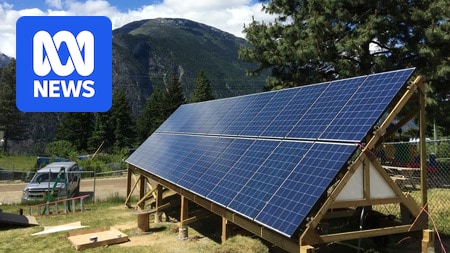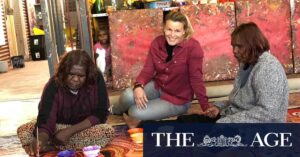
Indigenous communities in Canada are witnessing robust economic growth through recent energy projects, and traditional owners in Australia’s Pilbara region are observing these developments with keen interest. The Pilbara, a significant contributor to Australia’s economy by producing 90% of the country’s iron ore, is grappling with a stark wealth disparity between its Indigenous population and the region’s economic output.
During a resource summit held in Karratha earlier this month, ANU professor Peter Yu described the situation as “economic apartheid.” He highlighted the contrast between the region’s wealth generation and the high imprisonment rates of Aboriginal people, stating, “It’s a stark contrast, this being the global epicentre of wealth generation and creation, and then in the middle of it you have a prison full of Aboriginal faces.”
Western Australia has the highest rate of Aboriginal and Torres Strait Islander imprisonment, with 4,623 per 100,000 people incarcerated, according to the Australian Bureau of Statistics. Meanwhile, in Canada, Indigenous participation in energy projects is being recognized as a pathway to economic reconciliation. Putejurra woman Kate George remarked, “In the Pilbara, we want what they’re having,” underscoring the desire to emulate Canada’s success.
Learning from Canada’s Model
First Nations entities in Canada benefit from nearly 20% of the country’s electricity-generating infrastructure, a stark contrast to Australia’s 2%, as noted by Australia’s First Nations Clean Energy strategy. Dr. Kate George, chair of the Pilbara Energy Transition steering committee, emphasized the importance of learning from Canada’s partnerships between industry and First Nations people to inform future policy.
She pointed to examples such as the Canadian government’s role in brokering negotiations between industry and Indigenous peoples, a multi-billion-dollar Indigenous loan program, and the adoption of the United Nations Declaration on the Rights of Indigenous People. “Indigenous people are at the table as partners, which is a big difference compared to Australia,” Dr. George explained.
“For 100 years of failure, we could turn into something of a success in the way these agreements are now being struck, which is more equity-based rather than just passive royalty payments-based.” — Professor Peter Yu
Professor Yu noted that while Australia lags 20 to 30 years behind Canada, there is an opportunity to design the “right architecture” as companies begin to develop renewable energy projects on Aboriginal land.
Success Stories from Canada
In Ontario, Canada, remote communities are benefiting from the region’s largest Indigenous-run grid connection project. The Wataynikaneyap Power Project connects 17 remote communities to the electricity grid through a 1,800-kilometre transmission line. Twenty-four First Nations communities hold 51% ownership of the project through partnerships with private investors, with plans to achieve full ownership by 2049.
“It has taken us 34 years to accomplish the vision of bringing reliable and accessible energy into the area.” — Margaret Kenequanash, CEO of Wataynikaneyap Power
Further east in British Columbia, the Kanaka Bar Indian Band has developed several wind, hydro, and solar projects over decades. Retired Nlaka’pamux Nation chief Patrick Michell emphasized the projects’ role in restoring community identity and reversing the adverse effects of colonization.
Emerging Projects in the Pilbara
The Pilbara is already home to one of Australia’s largest Indigenous-led renewable energy initiatives. The Yindjibarndi Energy Corporation (YEC), in partnership with ACEN Corporation and Yinjibarndi Aboriginal Corporation, plans to build up to 3 gigawatts of renewable infrastructure across 13,000 square kilometres of Yindjibarndi Native Title Determination Areas.
Yindjibarndi people, as primary tenure holders, will receive long-term revenue and have approval rights for site selection. By owning a significant part of the company, they stand to gain secure long-term revenue from YEC projects.
“There is a great opportunity that will not just help us decarbonise, but will also economically benefit the community here and traditional owners.” — Craig Ricato, CEO of YEC
The Path Forward
The Clean Energy Strategy aims for Australia to achieve 82% renewable electricity generation by 2030, with Indigenous participation as a core component. The strategy emphasizes self-determination for First Nations people and building genuine partnerships.
Dr. George, co-lead of the First Nations Clean Energy and Climate Change Advisory Committee, described the strategy as a significant policy milestone, noting that “the next step is implementation.” With the Pilbara emitting over 40% of WA’s emissions but producing less than 2% of renewable energy, the urgency to reduce emissions and build projects is clear.
“We can learn from Canada as to how you structure projects and what’s possible.” — Dr. Kate George
As the Pilbara Energy Transition Plan progresses, the region looks to Canada’s example to guide its path toward economic reconciliation and sustainable development.







